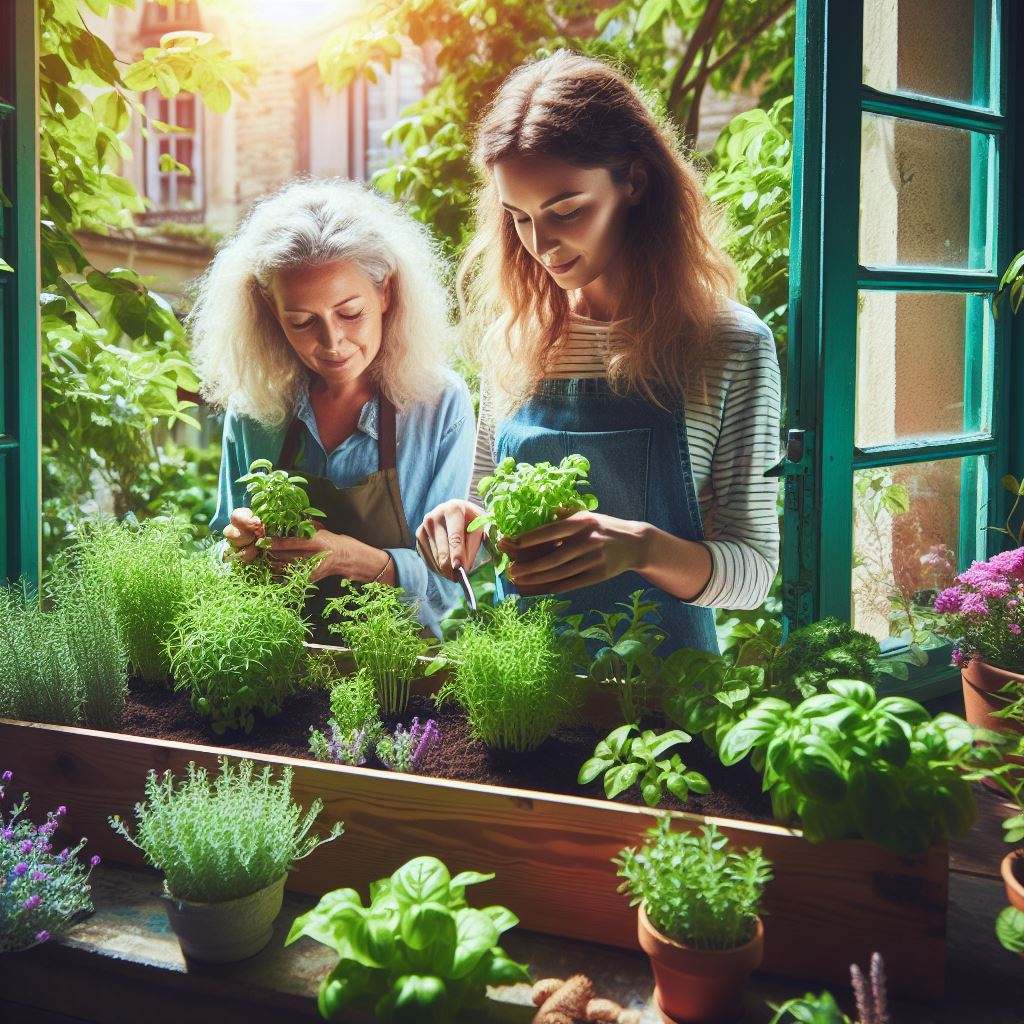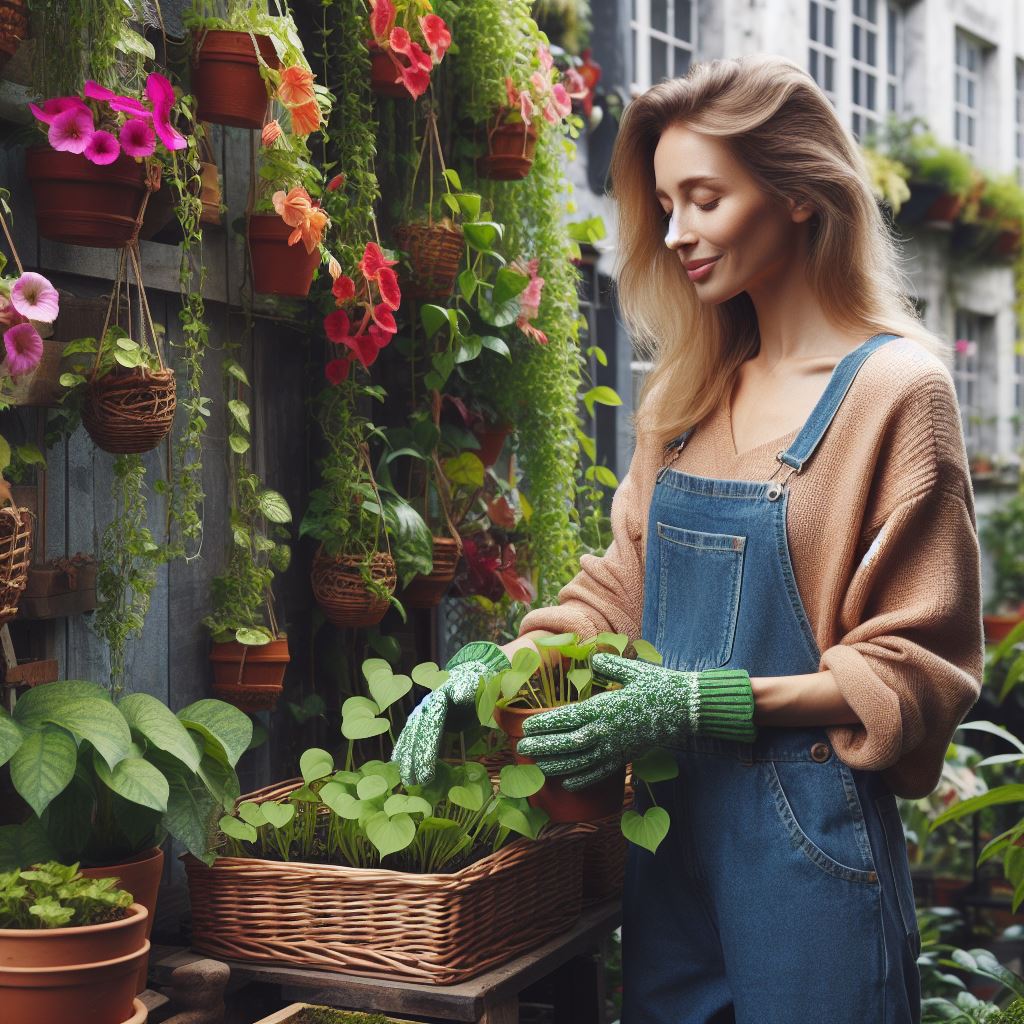Introduction
Window box farming is a practice of growing herbs and greens in small containers placed near windows.
This method is gaining popularity due to its convenience and numerous advantages.
Definition and Importance of Window Box Farming
Window box farming refers to the cultivation of plants in limited spaces, specifically using window boxes or containers near windows.
It allows individuals with limited space, such as apartment dwellers, to enjoy the benefits of gardening.
This form of farming is important as it enables urban dwellers to have access to fresh produce, even if they lack a traditional garden space.
It brings nature into city living, promoting mental wellbeing and providing an opportunity for urban gardening.
Brief Overview of the Benefits of Growing Herbs and Greens
Growing herbs and greens in window boxes offers a variety of benefits.
Firstly, it allows individuals to have a fresh supply of flavorful ingredients readily available for cooking and garnishing.
Freshly picked herbs and greens enhance the taste and nutritional value of meals.
Furthermore, window box farming promotes sustainability by reducing the carbon footprint associated with transporting produce.
Additionally, it enables individuals to control the use of pesticides and herbicides, ensuring healthier and chemical-free plants.
Furthermore, this type of farming encourages creativity by allowing individuals to experiment with different combinations of herbs and greens.
It provides an opportunity to explore unique flavors and expand culinary horizons.
Basically, window box farming is a practice that allows individuals to grow herbs and greens in limited spaces.
It offers numerous benefits such as accessibility to fresh produce, sustainability, and culinary exploration.
Transform Your Agribusiness
Unlock your farm's potential with expert advice tailored to your needs. Get actionable steps that drive real results.
Get StartedBy engaging in window box farming, individuals can enjoy the joys of gardening and experience the flavors of their own urban harvest.
Choosing the Right Window Box
Size and Material Considerations
- Assess the available space to determine the appropriate size for your window box.
- Consider the weight of the window box, especially if your window is high above the ground.
- Determine the material that suits your aesthetic preference and climate conditions.
- Wooden window boxes are popular for their natural beauty but require regular maintenance.
- Plastic window boxes are lightweight and easy to clean, but may not be as durable.
- Metal window boxes, such as wrought iron or aluminum, are sturdy and long-lasting but may be costlier.
- Ceramic window boxes add charm to your home but need to be handled with care.
Placement and Sunlight Requirements
- Observe the amount of sunlight your window receives throughout the day.
- Most herbs and greens require at least six hours of direct sunlight daily.
- Choose a window box that can be easily installed and aligned with the direction of sunlight.
- East or west-facing windows provide morning or afternoon sunlight, respectively.
- South-facing windows receive the most intense sunlight, making it ideal for sun-loving plants.
- If your window doesn’t receive sufficient sunlight, consider using supplemental lighting.
Proper Drainage and Watering Techniques
- Ensure your window box has proper drainage to prevent waterlogging.
- Select a window box with drainage holes or build them yourself.
- Line the bottom of the window box with a layer of small stones or broken pots to enhance drainage.
- Use a high-quality potting mix that allows water to flow freely through the soil.
- Water your herbs and greens regularly, aiming to keep the soil moist but not soaking wet.
- Avoid overwatering, as it can lead to root rot and other plant diseases.
- Check the soil moisture regularly by inserting your finger into the soil up to the first knuckle.
- Adjust your watering frequency based on the moisture level and weather conditions.
- Consider using self-watering window boxes or installing an irrigation system for convenience.
Generally, choosing the right window box for your herb and greens gardening is crucial for their growth and overall success.
By considering the size and material, you can ensure the window box complements your space and climate conditions.
Additionally, placing the window box in an area with adequate sunlight and providing proper drainage and watering techniques will promote healthy plant development.
So, take these factors into account before embarking on your window box farming journey. Happy gardening!
Read: Tiny Soil Science: Perfecting Pot Mixtures
Selecting Herbs and Greens
Popular and easy-to-grow herbs for window boxes
- Basil, mint, and parsley are excellent choices for window box farming as they thrive in small spaces.
- Thyme, rosemary, and sage are aromatic herbs that can add wonderful flavors to your dishes.
- Chives, oregano, and cilantro are versatile herbs that can be used in various cuisines.
Nutrient-rich greens suitable for window box farming
- Leaf lettuce, spinach, and kale are packed with vitamins and minerals, making them a healthy option.
- Swiss chard and arugula are flavorful greens that can be used in salads or cooked dishes.
- Mustard greens and watercress are peppery greens that can add a spicy kick to your meals.
Benefits of selecting herbs and greens for window box farming
Window box farming allows you to have a fresh supply of herbs and greens right at your fingertips.
By selecting popular herbs like basil, mint, and parsley, you can enhance the flavor of your dishes.
The aromatic herbs, such as thyme, rosemary, and sage, can provide a delightful fragrance to your home.
Chives, oregano, and cilantro offer various culinary possibilities, adding versatility to your cooking.
Leaf lettuce, spinach, and kale are rich in nutrients like vitamin C, iron, and calcium.
Adding Swiss chard and arugula to your window box can provide you with fresh salad greens throughout the season.
Mustard greens and watercress can add a unique and spicy flavor to your meals.
Tips for selecting and growing herbs and greens in window boxes
Choose herbs and greens that are suitable for your climate and the amount of sunlight your window receives.
Ensure your window box has proper drainage to avoid waterlogged roots, which can cause plant damage.
Use high-quality potting soil and provide regular watering to keep your herbs and greens healthy.
Consider adding organic fertilizers or compost to provide the necessary nutrients for optimal growth.
Harvest your herbs and greens regularly to promote bushier growth and to avoid overcrowding in the window box.
Rotate your herb and green selection periodically to prevent plant diseases and depletion of soil nutrients.
Enjoy the satisfaction of growing your own fresh herbs and nutrient-rich greens with window box farming.
Experiment with different herb and green combinations to create unique flavors and dishes.
Selecting the right herbs and greens for your window box farming is essential for a successful and rewarding experience.
Popular herbs like basil, mint, and parsley as well as nutrient-rich greens such as leaf lettuce and spinach are excellent choices.
Remember to provide proper care and maintenance to ensure your window box plants thrive and provide you with an abundant harvest.
Showcase Your Farming Business
Publish your professional farming services profile on our blog for a one-time fee of $200 and reach a dedicated audience of farmers and agribusiness owners.
Publish Your ProfileWith a little effort and creativity, you can enjoy the convenience and freshness of homegrown herbs and greens all year round.
Read: Portable Plots: Mobile Garden Strategies
Planting and Caring for Herbs and Greens
Window box farming offers an incredible opportunity to grow fresh herbs and greens right at your fingertips.
By following proper planting and caring techniques, you can ensure a thriving garden in your compact outdoor space.
Pay attention to the following steps to maximize your window box’s potential and enjoy a bountiful harvest.
Preparing the soil and choosing the right potting mix
To begin, clear out any debris from your window box and check for functional drainage holes.
Fill the box with a lightweight potting mix specifically designed for herbs and greens.
Look for a mix that contains organic matter and provides essential nutrients for healthy plant growth.
Starting from seeds or transplants
Decide whether you want to start your garden from seeds or transplants.
If opting for seeds, follow the packet instructions for sowing and maintain proper moisture levels.
For transplants, delicately remove them from their containers and plant them in the prepared window box.
Handle them with care to avoid damaging their delicate root systems.
Proper spacing and thinning
Consider the space requirements for each herb and green variety to prevent overcrowding.
Adequate spacing allows for proper air circulation and future growth.
As the plants develop, thinning becomes necessary to remove excess seedlings or larger plants, ensuring optimal nutrient absorption and enhanced productivity.
Watering, fertilizing, and pest control
Watering is essential for thriving herbs and greens.
Ensure a consistent moisture level without waterlogging, as excess water can lead to root rot.
Additionally, regularly fertilize the plants with an organic fertilizer to support lush foliage and robust growth.
Keep an eye out for common pests like aphids or snails and address them promptly with organic pest control methods.
Harvesting techniques for continuous growth
When it comes to harvesting, timing is crucial.
Harvest herbs when they have reached a sufficient size but before they start flowering.
This ensures optimal flavor and nutrient content.
Remember not to harvest more than one-third of the plant at a time, allowing it to continue growing and providing a continuous supply.
Use clean, sharp shears to cut near the base of the stem or pluck individual leaves.
By following these planting and caring tips for herbs and greens in your window box, you’ll be rewarded with a beautiful, flourishing garden that provides an abundant harvest right outside your window.
Enjoy the convenience of fresh, homegrown flavors in your cooking and the satisfaction of nurturing your own green oasis.
Read: Efficient Herb Gardening in Mini Plots

Creative and Practical Window Box Farming Ideas
When it comes to window box farming, there are plenty of creative and practical ideas to make your herb and green garden thrive.
Combining Herbs and Greens for a Diverse Window Box Garden
- Plant a mix of herbs such as basil, parsley, and thyme, along with salad greens like lettuce and spinach.
- The different plants will not only add variety to your window box, but they will also complement each other in terms of growth and flavor.
- Harvesting your own fresh herbs and greens will elevate your cooking and ensure a constant supply of nutritious ingredients.
Utilizing Vertical Space with Hanging or Stacked Window Boxes
- If you’re short on space or want to add a unique visual element to your window box garden, consider hanging or stacking your window boxes.
- Hang them from a balcony railing or attach them to an exterior wall using sturdy brackets.
- This vertical setup not only maximizes space but also allows for easy access and maintenance of the plants.
Incorporating Edible Flowers for Added Beauty and Taste
- Add a touch of beauty to your window box garden by including edible flowers like nasturtiums, pansies, and violets.
- These flowers not only enhance the aesthetics of your garden but can also be used to garnish salads and desserts.
- Just make sure to research and choose edible flowers that are safe to consume and suitable for your local climate.
Companion Planting to Enhance Growth and Repel Pests
- Companion planting is an effective technique to improve the growth of plants and deter pests naturally.
- For example, planting marigolds alongside your herbs and greens can repel aphids and other harmful insects.
- Basil is also a great companion plant as it enhances the flavor of tomatoes and helps repel mosquitoes.
By incorporating these ideas into your window box farming, you can create a vibrant and productive garden right outside your window.
Not only will you have a fresh supply of herbs and greens, but the aesthetic value and practicality of window box farming will take your gardening experience to new heights.
Read: Herb Boxes for Beginners: Small Space Edition
Troubleshooting Window Box Farming Challenges
Dealing with inadequate sunlight or shade
- Assess the amount of sunlight your window box receives throughout the day.
- Choose plants that are suitable for the lighting conditions in your specific location.
- Consider using artificial lighting, such as grow lights, to supplement inadequate sunlight.
- Place shade cloth or blinds on the window to protect plants from excessive heat and direct sunlight.
- Avoid placing the window box in areas with heavy shade, as it may hinder plant growth.
Managing pests and diseases effectively
- Regularly inspect plants for signs of pests such as aphids, spider mites, or caterpillars.
- Use organic pest control methods like neem oil or insecticidal soap to treat infestations.
- Encourage beneficial insects like ladybugs or lacewings that prey on garden pests.
- Keep the window box clean and remove any debris that may harbor pests or diseases.
- Practice crop rotation and avoid overcrowding plants to minimize the risk of disease.
Preventing overwatering or under-watering
- Check the moisture levels in the soil regularly by sticking your finger about an inch deep.
- Water the plants when the soil feels slightly dry, but not completely parched.
- Avoid overwatering by ensuring proper drainage in the window box, using well-draining soil, and not letting excess water collect at the bottom.
- Consider using self-watering containers or install a drip irrigation system for consistent watering.
- Adjust your watering schedule based on weather conditions and plant requirements.
Recognizing nutrient deficiencies and taking corrective measures
- Familiarize yourself with common symptoms of nutrient deficiencies, such as yellowing leaves or stunted growth.
- Conduct a soil test to identify specific nutrient deficiencies and adjust fertilizer application accordingly.
- Use organic fertilizers or compost to provide a balanced nutrient supply to the plants.
- Consider using foliar sprays or liquid fertilizers for quick nutrient uptake by the plants.
- Be cautious not to over-fertilize, as this can lead to nutrient imbalances and damage the plants.
By addressing these common challenges in window box farming, you can ensure the success of your herb and green garden.
Remember to monitor your plants regularly, adjust care practices as needed, and enjoy the bountiful harvest right outside your window!
Conclusion
Recap of the benefits and simplicity of window box farming
Window box farming provides numerous benefits, such as easy access to fresh herbs and greens, saving money on groceries, and beautifying your living space.
It is a simple and convenient way to grow your own food, even in limited spaces.
Encouragement to get started with window box farming
If you have been considering starting your own window box garden, now is the perfect time!
With just a few supplies and a bit of dedication, you can enjoy the satisfaction of growing your own herbs and greens right at home.
Don’t let the lack of a traditional garden space hold you back; window box farming is the answer.
Final thoughts and inspiration for a thriving window box herb and greens garden
Remember, gardening is a journey, and it requires patience and nurturing.
Embrace the daily care and watch as your plants flourish.
Showcase Your Farming Business
Publish your professional farming services profile on our blog for a one-time fee of $200 and reach a dedicated audience of farmers and agribusiness owners.
Publish Your ProfileExperiment with different herbs and greens, and don’t be afraid to try new growing techniques.
Let your window box garden bring you joy, delicious flavors, and a connection to nature. Happy gardening!




